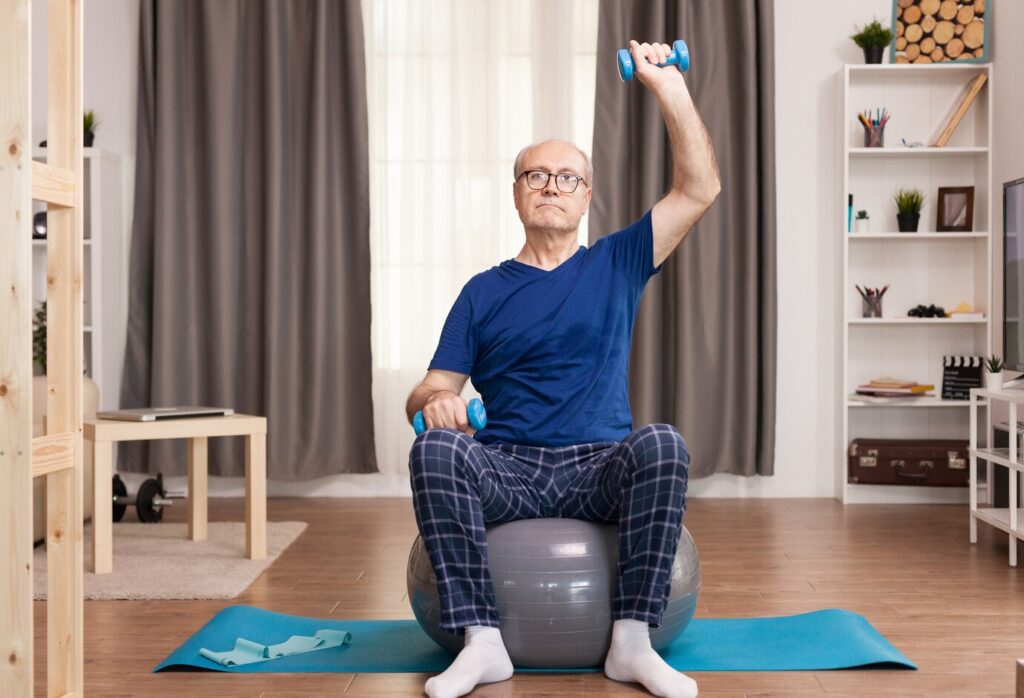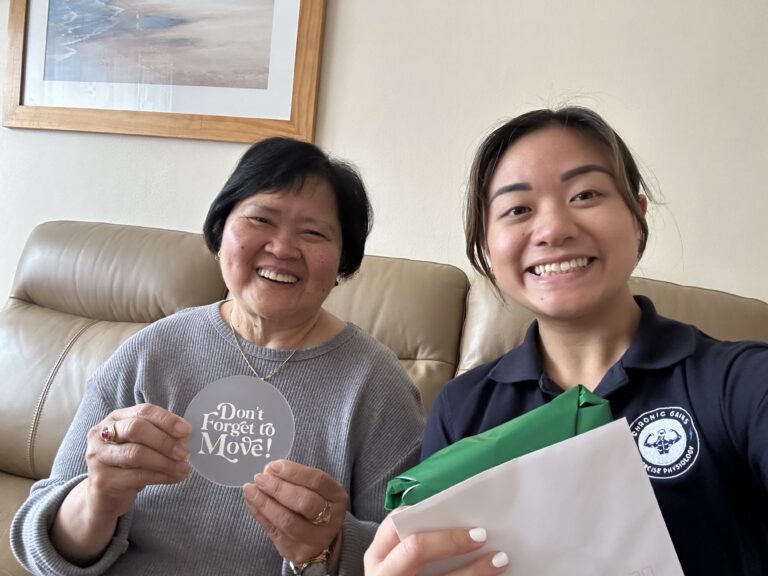How Regular Exercise Can Slow the Effects of Aging
Ageing is a natural process, one that brings wisdom, life experience, and growth. It also comes with physical changes that can affect our health, mobility, and quality of life. While we can’t stop time, we can shape how we age — and regular exercise is one of the most powerful tools we have! Exercise Physiology, a field dedicated to understanding how the body responds to physical activity, provides valuable insights into slowing the effects of ageing through tailored movement programs.
Understanding the Ageing Process
As we age, our bodies undergo several changes that can impact our physical and mental health. Common changes include:
- Loss of Muscle Mass (Sarcopenia): Starting around age 30, adults lose 3-5% of muscle mass per decade if they’re inactive. This leads to reduced strength and functionality.
- Bone Density Decline: Aging decreases bone density, increasing the risk of osteoporosis, falls and fractures.
- Slower Metabolism: Metabolic rate drops with age, often leading to weight gain and difficulty maintaining energy levels.
- Reduced Cardiovascular Efficiency: The heart and lungs lose efficiency, making physical activity feel more challenging over time.
- Cognitive Decline: Aging can impact memory, problem-solving, and overall brain function.
While these changes are part of the ageing process, they’re not inevitable. With regular, well-structured exercise, we can counteract many of these effects and live a long, strong and fulfilling life.
The Role of Exercise in Healthy Aging

Exercise Physiologists strongly believe that ‘exercise is medicine’, because exercise benefits nearly every system in the body. For older adults, regular exercise improves strength, balance, bone health, heart function, and even mental health. Here’s how it works:
- Maintaining Muscle Mass and Strength: Resistance training, like lifting weights or using resistance bands, stimulates muscle growth, preventing sarcopenia. This is crucial for maintaining independence in daily activities, such as climbing stairs, carrying groceries or even something as simple as sitting/standing from a chair with no hands.
- Preserving Bone Density: Weight-bearing exercises, like walking, dancing, or hiking, help keep bones strong by encouraging bone remodeling—the process of replacing old bone with new tissue. With stronger bones, risk of fractures decreases significantly and this improves confidence for older adults to mobilise more frequently.
- Improving Cardiovascular Health: Aerobic activities, such as swimming, cycling, or brisk walking, enhance heart and lung function. This improves endurance, lowers blood pressure, and reduces the risk of heart disease.
- Boosting Cognitive Function: Exercise increases blood flow to the brain, supporting memory, attention, and overall cognitive performance. Activities like tai chi or yoga, which require focus and coordination, are particularly effective.
- Enhancing Mental Health: Physical activity releases endorphins, reducing stress, anxiety, and depression. It also fosters a sense of accomplishment, boosting self-esteem and mood.
How Exercise Slows Aging at the Cellular Level
Exercise doesn’t just improve how you feel — it impacts your body at a cellular level. Research shows that regular physical activity:
- Reduces Inflammation: Chronic inflammation contributes to many age-related diseases, including arthritis and cardiovascular issues. Exercise helps lower inflammation markers in the body.
- Protects Telomeres: Telomeres, the protective caps on the ends of chromosomes, shorten as we age. Exercise is associated with longer telomeres, which are linked to slower aging.
- Enhances Mitochondrial Function: Mitochondria are the powerhouses of our cells, and their efficiency declines with age. Exercise stimulates mitochondrial activity, improving energy production and reducing fatigue.
Key Types of Exercise for Ageing Adults
For ageing adults, a well-rounded exercise program includes four key components:
- Strength Training: Build muscle and maintain bone density with exercises at home such as squats, lunges, and wall push-ups. At the gym, machines such as pin-loaded machines and lifting light weights can be used to effectively and safely build muscle and increase bone density. Aim for two sessions per week, focusing on major muscle groups such as the upper body, legs, hips and core.
- Aerobic Exercise: Keep your heart and lungs healthy with moderate intensity activities like walking, swimming, or cycling. Strive for at least 150 minutes of aerobic activity per week.
- Balance and Stability Exercises: Falls are a leading cause of injury in older adults. Improve balance with activities like tai chi, yoga, or single-leg standing exercises.
- Flexibility and Mobility Work: Stretching exercises, such as yoga or dynamic stretches, improve joint range of motion and reduce stiffness. This helps with making everyday movement feel much easier.
How an Exercise Physiologist Can Help

As we age, exercise needs to be tailored to our abilities, health conditions, and goals. This is where an exercise physiologist comes in. We create personalised programs designed to:
- Address specific health concerns, such as arthritis, osteoporosis, or cardiovascular issues.
- Avoid movements that may cause strain or injury.
- Monitor progress and adjust the plan as needed.
- Provide education on safe, effective techniques.
For example, someone with joint pain might benefit from low-impact exercises like water aerobics, while an individual recovering from a fall might focus on strength for their hips and balance training.
Overcoming Barriers to Exercise
It’s common for older adults to face challenges when starting an exercise routine, such as:
- Fear of Injury: Many people worry about getting hurt. With professional guidance, you can exercise safely and confidently.
- Chronic Conditions: Conditions like arthritis or diabetes can feel like obstacles. Exercise can often alleviate symptoms and improve overall health.
- Lack of Motivation: It’s never too late to start. Setting small, achievable goals and celebrating progress can keep you motivated.
Remember, even small amounts of movement are better than none. Start where you’re comfortable and build your way up from there.
Getting Started: Practical Tips for Active Ageing
If you’re ready to embrace exercise as part of your healthy ageing journey, here’s how to begin:
- Consult a professional: Speak with an Exercise Physiologist or healthcare provider to create a safe, effective plan.
- Start small: Begin with activities you enjoy, such as walking, gardening, or dancing, and gradually increase intensity.
- Be consistent: Aim for regular exercise sessions each week to build habits that last.
- Combine with healthy habits: Pair exercise with a balanced diet, proper hydration, and adequate sleep for maximum benefits.
Ageing Gracefully with Movement
Ageing is inevitable, but how you age is within your control. Regular exercise, guided by the principles of Exercise Physiology, offers a pathway to strength, independence, and vitality. Whether you’re 30, 60, or 90, it’s never too late to start reaping the benefits of physical activity.
At Chronic Gains, we specialise in creating individualised exercise plans that empower you to thrive at any age. Let’s work together to unlock your full potential and make your later years the best they can be. Contact us today to start your journey to active ageing and chasing a life of chronic gains!







